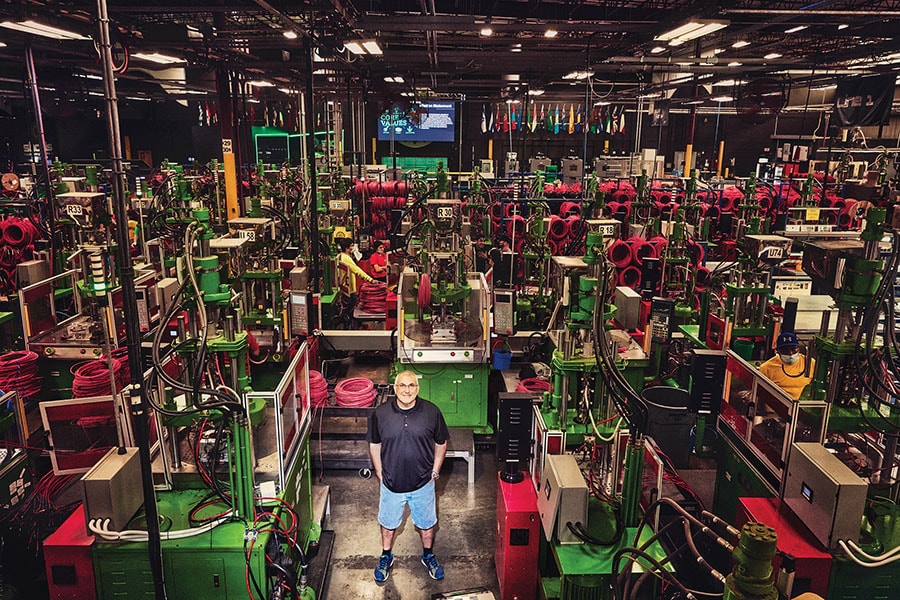
Sesame Street smart: Building a multibillion-dollar solar energy empire
Dean Solon built a multibillion-dollar fortune in solar energy by manufacturing gear that can be made cheaply in China. His secret: Higher prices for higher quality
 Dean Solon, founder of Shoals Technologies, designed this Portland, Tennessee, factory, where each day 500 of his employees make enough cable to rig “megawatts upon megawatts” of solar power
Dean Solon, founder of Shoals Technologies, designed this Portland, Tennessee, factory, where each day 500 of his employees make enough cable to rig “megawatts upon megawatts” of solar power
Image: Jamel Toppin for Forbes
At Shoals Technologies’ 100,000-square foot factory in Portland, Tennessee, Dean Solon’s quest for simplicity starts with the colour-coded shirts, inspired by Sesame Street, that his workers wear. “The SunPower logo was yellow, so that’s Big Bird. First Solar was red, for Elmo,” he says. Those working on an order for Blattner Energy, a big solar contractor, sport Cookie Monster blue. “And then we have the Count, in purple. He’s always counting. Those are the quality control people.
Shoals’ nonunionised workers at four factories in Tennessee and Alabama make the guts for big solar installations—basically, everything you need other than those shiny photovoltaic panels and the inverters necessary to feed power onto the grid. They craft cable assemblies, combiner boxes, external fuses. It’s exactly the sort of unsexy manufacturing that nearly everyone thinks fled to China years ago.
Indeed, most of Solon’s competitors are Chinese companies like GCL System Integration and Wuxi Sun King. The Chinese-made components are cheaper than Shoals’, but Solon has an edge: His stuff is seen as safer, more reliable and easier to install. That means companies are willing to pay 5 to 10 percent more for it, believing they’ll make up for it in lower labour and maintenance costs. Last year, that premium added up to earnings of $34 million on $176 million in sales. After a January IPO, the 57-year-old Solon is worth some $2.2 billion, thanks to his 40 percent stake in the company and after-tax proceeds from prior equity sales.
To keep that made-in-America premium as low as possible, Solon makes the manufacturing process as foolproof as he can. Screens mounted on the front of each machine show workers how to do each task—from stripping and crimping wires to installing fuses and finishing cable assemblies—with cycle times measured not in man-hours but man-seconds. It’s a “Pavlov’s dog” world, Solon says, in which workers are trained to self-correct when a light atop their station starts blinking, indicating they’ve slipped behind schedule and have about 15 minutes to sort it out before the blinking gets faster and “maintenance” is summoned. They’re told never to worry about messing up. “If this process makes something wrong, shame on us—we designed it wrong, we didn’t bulletproof enough for you not to make mistakes,” he says.





